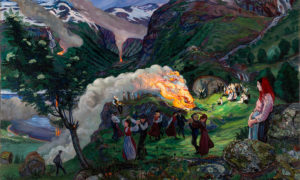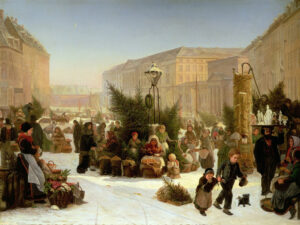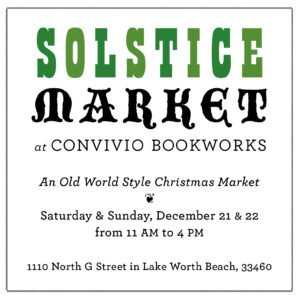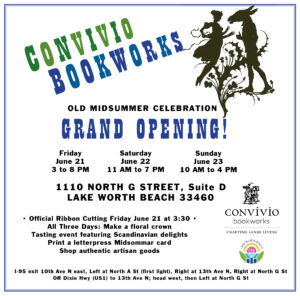The longest day has come and gone, and here we are, on its heels, with an old celebration known as Midsummer. The opposite spoke of the wheel from Yuletide, Midsummer tends to get short shrift here in the States. But if we look at our Wheel of the Year, and if we were to place the two solstices at the poles, top and bottom, one would be the June solstice and the other would be the December solstice. For us here in the Northern Hemisphere, the June solstice brings summer, and the December solstice, winter. Our ancestors called these Midsummer and Midwinter, and with good reason: for Midsummer, light increases daily up until the solstice, and then begins to diminish. And of course the opposite happens with Midwinter: darkness increases daily up until the solstice, and then begins to diminish. It’s the Constant Rearrange we talk about, each day slightly different than the one before and the one to come.
The early Church chose these highly metaphoric celestial events as the birth dates of Jesus and his cousin, John the Baptist. No one knows, of course, when these two historic figures were actually born. But how powerful, no, to place the birth of Jesus at Midwinter and the birth of St. John at Midsummer. St. John brings shortening days each year, and John himself tells us something to the effect of, “I must decrease so he may increase.” John prepares the way for Jesus. Six months later, we reach the opposite spoke in our wheel, and there we celebrate the birth of Christ, at the time of our darkest days, our longest nights… just as sunlight begins again its increase. Hence the old hymn, “Jesus, the Light of the World“.
Transitional periods like this in our wheel have long been considered magical times, too. We know all about Christmas Eve magic (ask any young child and perhaps the young-at-heart, too). St. John’s Eve has a healthy dose of this, as well. William Shakespeare set his comedy, A Midsummer Night’s Dream, on this night. Talk about magic and mayhem. This is a wonderful time of year to read Shakespeare’s play, or to watch one of the film versions. It’s also a wonderful time of year to be outdoors in the twilight as our longest days transition to our shortest nights. Happy Midsummer.
COME SEE US AT THE SHOP!
We’ve got Kim Spivey teaching a new session of Collagraph Printmaking on Sunday July 27. Kim’s a great teacher and this is a wonderful class… it’s the second time she’s teaching it for us this year. Come learn something new!
Image: “Midsummer Eve Bonfire” by Nikolai Astrup. Painting, 1915. [Public domain] via Wikimedia Commons.




